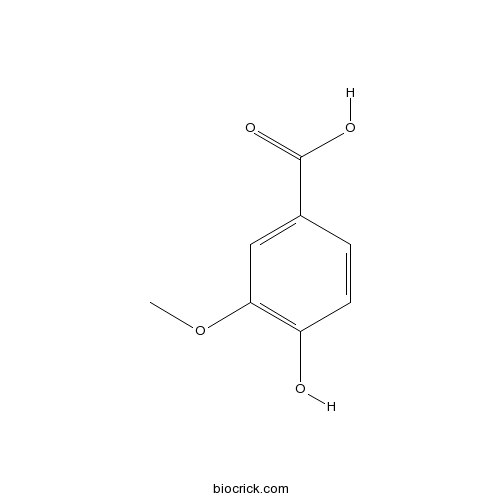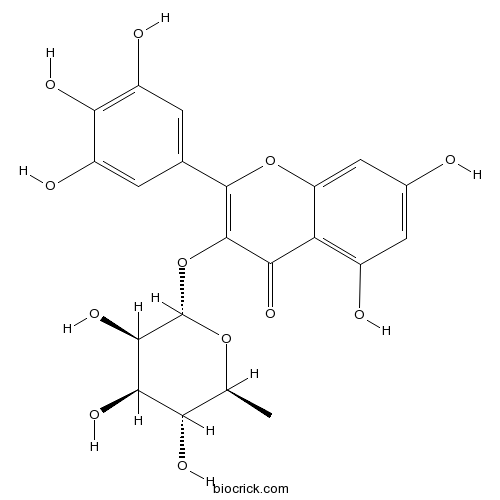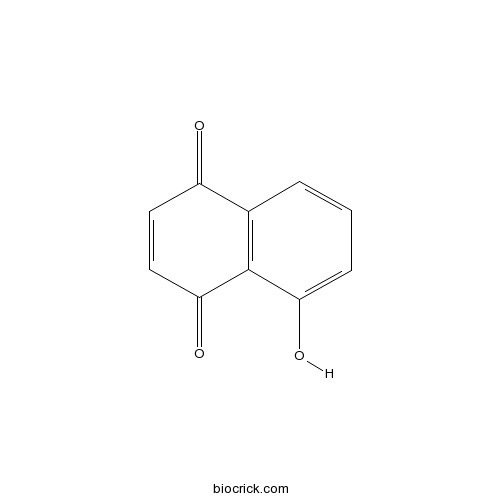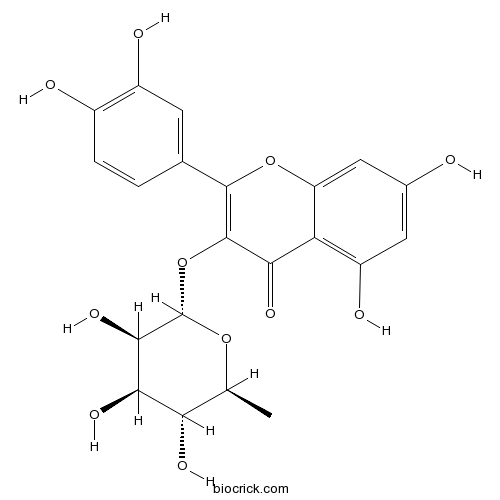Juglans mandshurica
Juglans mandshurica
1. The products in our compound library are selected from thousands of unique natural products; 2. It has the characteristics of diverse structure, diverse sources and wide coverage of activities; 3. Provide information on the activity of products from major journals, patents and research reports around the world, providing theoretical direction and research basis for further research and screening; 4. Free combination according to the type, source, target and disease of natural product; 5. The compound powder is placed in a covered tube and then discharged into a 10 x 10 cryostat; 6. Transport in ice pack or dry ice pack. Please store it at -20 °C as soon as possible after receiving the product, and use it as soon as possible after opening.
Natural products/compounds from Juglans mandshurica
- Cat.No. Product Name CAS Number COA
-
BCN6105
Vanillic acid121-34-6
Instructions

-
BCN1136
Myricitrin17912-87-7
Instructions

-
BCN5315
Alpinetin36052-37-6
Instructions

-
BCN2639
Juglone481-39-0
Instructions

-
BCN5665
Quercitrin522-12-3
Instructions

-
BCN4171
Wogonin632-85-9
Instructions

Identification and characterization of major constituents in Juglans mandshurica using ultra performance liquid chromatography coupled with time-of-flight mass spectrometry (UPLC-ESI-Q-TOF/MS).[Pubmed: 30080652]
None
Antimicrobial and cytotoxic juglones from the immature exocarps of Juglans mandshurica.[Pubmed: 29726709]
Juglonols A-C (1-3), three new juglone derivatives possessing a hydroxyethyl side chain, were isolated from an organic extract of the immature exocarps of Juglans mandshurica together with five known tetralones (4-8). Their structures were elucidated by extensive spectroscopic analyses and comparison with literature data. The new juglone derivatives exhibited inhibitory activities towards a panel of bacteria and fungi, as well as cancer cell lines. In contrast, the known tetralone homologues (4-8) appeared to be much less efficacy.
Antioxidant hydrolyzed peptides from Manchurian walnut (Juglans mandshurica Maxim.) attenuate scopolamine-induced memory impairment in mice.[Pubmed: 29652442]
Walnut protein, which is obtained as a by-product of oil expression, has not been used efficiently. Although walnuts are beneficial for cognitive functioning, the potential of their protein composition in strengthening learning and memory functions remains unknown. In this study, the inhibition of memory impairment by the Manchurian walnut hydrolyzed peptide (MWHP) was evaluated.
Juglone induces apoptosis and autophagy via modulation of mitogen-activated protein kinase pathways in human hepatocellular carcinoma cells.[Pubmed: 29627502]
Juglone (JG), a naturally-occurring naphthoquinone of Manchurian walnut (Juglans mandshurica) was shown to inhibit proliferation in various tumor types. However, the molecular mechanisms of JG on the induction of apoptosis and autophagy in HepG2 cells have not been examined. Herein, we investigated that JG could inhibit cell proliferation by induction of G2/M phase arrest. Also, occurrence of apoptosis was closely related with loss of mitochondrial membrane potential, the changes of apoptosis-related proteins after treatment with JG. In addition, we found that JG caused autophagy, as evidenced by increased expressions of LC3-II and Beclin-1. Interestingly, inhibition of JG-induced autophagy by 3-methyladenine (3-MA) and wortmannin (WT) significantly decreased apoptosis, whereas the apoptosis inhibitor z-VAD-fmk slightly enhanced autophagy. Furthermore, the induction of autophagy and apoptosis was associated with activation of MAPK family members (p38 and JNK) and production of reactive oxygen species (ROS). Both JNK inhibitor (SP600125) and ROS scavenger (N-acetylcysteine, NAC) could attenuate JG-induced autophagy and apoptosis. However, the p38-specific inhibitor SB203580 enhanced autophagic and apoptotic death. Moreover, the ROS scavenger NAC prevented phosphorylation of both p38 and JNK. Collectively, our data revealed that JG induced G2/M phase arrest, apoptosis, and autophagy through the ROS-dependent signaling pathway.
Juglanin suppresses fibrosis and inflammation response caused by LPS in acute lung injury.[Pubmed: 29532887]
Acute lung injury in children is a complication showing devastating disorders linked to fibrosis progression and inflammation response. Fibrosis and inflammation response are two markers for acute lung injury. Juglanin is a natural product mainly isolated from green walnut husks of Juglans mandshurica, which isconsidered as the functional composition among a series of compounds. It exhibited effective role in various diseases by inhibiting inflammation response. In our study, the protective effects and anti-inflammatory activity of juglanin were investigated in mice and lung cells treated by lipopolysaccharide (LPS) to reveal the possible mechanism by which juglanin attenuates acute lung injury. The mice were separated into four groups. The mouse model was established with 15 mg/kg LPS injection. Juglanin dramatically reduced the inflammation of cell infiltration. Compared to mice only treated with LPS, LPS-treated mice in the presence of juglanin developed less lung fibrosis with lower levels of α-smooth muscle-actin (α-SMA), collagen type I, collagen type III, and transforming growth factor-β1 (TGF-β1). Additionally, juglanin markedly downregulated inflammatory cytokine secretion and phosphorylated nuclear factor-κB (NF-κB) expression via inhibiting IKKα/IκBα signaling pathway. Our results indicate that juglanin has a protective role in LPS-triggered acute lung injury via suppression of fibrosis and inflammation response by NF-κB signaling pathways inactivation. Thus, juglanin may be a potential candidate as dietary supplement for acute lung injury for children in future.
A new coumarin from Juglans mandshurica Maxim induce apoptosis in hepatocarcinoma cells.[Pubmed: 29397774]
None
Allometric biomass equations for 12 tree species in coniferous and broadleaved mixed forests, Northeastern China.[Pubmed: 29351291]
Understanding forest carbon budget and dynamics for sustainable resource management and ecosystem functions requires quantification of above- and below-ground biomass at individual tree species and stand levels. In this study, a total of 122 trees (9-12 per species) were destructively sampled to determine above- and below-ground biomass of 12 tree species (Acer mandshuricum, Acer mono, Betula platyphylla, Carpinus cordata, Fraxinus mandshurica, Juglans mandshurica, Maackia amurensis, P. koraiensis, Populus ussuriensis, Quercus mongolica, Tilia amurensis and Ulmus japonica) in coniferous and broadleaved mixed forests of Northeastern China, an area of the largest natural forest in the country. Biomass allocation was examined and biomass models were developed using diameter as independent variable for individual tree species and all species combined. The results showed that the largest biomass allocation of all species combined was on stems (57.1%), followed by coarse root (21.3%), branch (18.7%), and foliage (2.9%). The log-transformed model was statistically significant for all biomass components, although predicting power was higher for species-specific models than for all species combined, general biomass models, and higher for stems, roots, above-ground biomass, and total tree biomass than for branch and foliage biomass. These findings supplement the previous studies on this forest type by additional sample trees, species and locations, and support biomass research on forest carbon budget and dynamics by management activities such as thinning and harvesting in the northeastern part of China.


